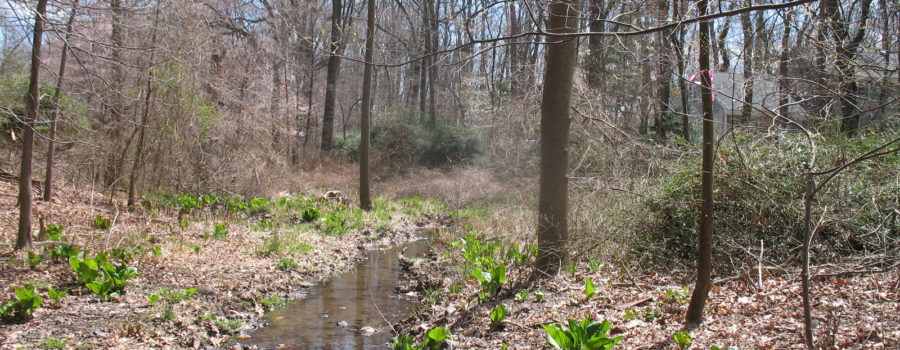WETLAND DELINEATIONS
Wetlands may be present on a property, whether their presence is obvious or not. A ditch, pond, stream, forested wetland, salt marsh along a tidal waterway, or an emergent wetland dominated by grasses and other herbaceous vegetative species are examples of some wetland types. Various rules and regulations provide protection for wetlands. In some cases, the use of vegetated areas adjacent to wetlands may also be restricted. These rules and regulations may be administered by federal, state and/or local government agencies depending on the property’s location.
Determining the extent of wetlands on a property is directly related to the development potential, and therefore, value of a property. The staff of MEC has conducted wetland evaluations and delineations on more than 3,500 properties in New Jersey and many other states. Sometimes, the evaluations and delineations are conducted to assist a potential buyer in determining whether a particular property is suitable for a proposed development. This often occurs during the due diligence period. Other times, MEC’s assistance is utilized by a property seller to assist in determining the value of a property or to obtain a property tax reduction.
In New Jersey, vegetated areas adjacent to wetlands may also be protected. These areas are known as transition areas or wetland buffers. Some wetland types do not require a wetland buffer, while other wetlands may have a 50-foot or 150-foot wide wetland buffer. Many of the same activities that are regulated in wetlands are also regulated in wetland buffers. Such activities include clearing of vegetation, filling, excavation, etc.
MEC recommends conducting a wetland evaluation to determine if wetlands are present in the area of a proposed activity before the project begins. MEC’s evaluations will also determine whether there are any wetland buffers from adjoining properties that may affect your proposed project. MEC has conducted wetland evaluations for many types of activities, including:
- Additions to single-family homes;
- Installation of an in-ground pool;
- Development of one or multiple houses;
- Construction of a driveway;
- Roadway widenings;
- New roadways;
- Development for commercial or industrial uses;
- Re-development of properties; and
- Conservation of a property.
Once the extent of wetlands has been determined, MEC has frequently obtained verification of the wetland boundary from a regulatory agency, such as the NJDEP or the US Army Corps of Engineers. In some cases, it may not be possible to implement a client’s proposed activities without affecting wetlands. In these cases, MEC coordinates with clients and the project engineers or architects to reduce impacts to wetlands. This evaluation is conducted while keeping the clients’ goals in mind as well as maintaining compliance with the applicable regulatory programs. MEC has prepared application packages to the regulatory agencies and obtained authorizations for activities in wetlands for many projects. MEC also assists clients with wetlands mitigation, when necessary.

